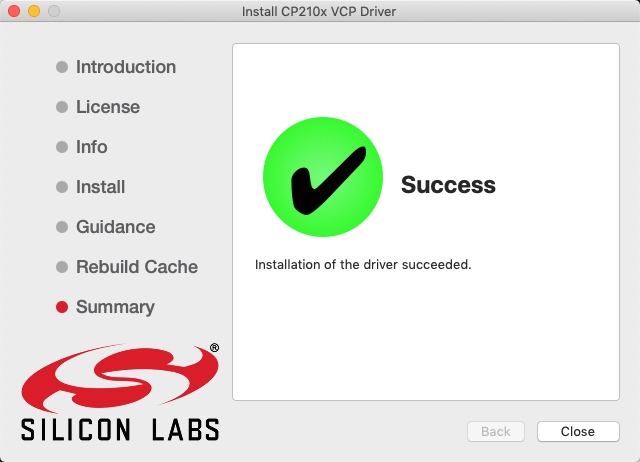

- #INSTALL COOLTERM HOW TO#
- #INSTALL COOLTERM INSTALL#
- #INSTALL COOLTERM SERIAL#
- #INSTALL COOLTERM UPDATE#
- #INSTALL COOLTERM SOFTWARE#
However, don’t worry about this issue, there is a CoolTerm software to read digital or analog signals. Note: device pairing can’t be completed in the Google Chrome if the system is Windows7/8, that is, the corresponding digital or analog signals can’t be read. The program is imported successfully after seconds In addition to the above method of importing the provided project code program files directly into the Makecode compiler, you can also drag the provided project code program files directly into the Makecode compiler, as shown in the figure below: Makecode Code/6.1:heartbeat/microbit-heartbeat.hex”, then tap“Go ahead”. Open Makecode online editor on your computerĬhoose file“.
#INSTALL COOLTERM HOW TO#
Next, we will take“heartbeat”as example to introduce how to import code You could import it directly or program in Makecode blocks area, therefore, the extension library must be added.(How to add extension?)
#INSTALL COOLTERM UPDATE#
What’s more, if you don’t know how to update the firmware of micro:bit, refer the link: or browse we provide. If there is no device in the window, please refer the following link: Then select the device you want to connect and“connect”in the window popping up Click“.”beside“Download”and click“Pair device”. You could refer to the following steps to connect and pair device.Ĭonnect to computer by USB cable. We use the webUSB function of Chrome to allow the internet page to access the hardware device connected USB. When plugging in power or resetting, “on start”means that command blocks in the code are only executed once, “forever”implies that code will runs cyclically. There are block “on start” and “forever” in the code editing area. Then click“Computer”->“Properties”->“Device manager”, as shown below.īrowse and enter Makecode online editor.Ĭlick“New Project”, and input“heartbeat”,then enter Makecode editor, as shown below: The following page pops up and click“install”
#INSTALL COOLTERM INSTALL#
Note: Batteries are not included Micro:bit Install Drive of Micro:bit Boardġ)First of all, connect the micro:bit to your computer using a USB cable.Īnd enter website to download the driver file of micro:bit, double-click ,Īfter downloading the driver, then click “Next” The detailed projects, from simple to difficult will spur your inspiration and bring in the magical programming world. This super starter kit incorporates different sensors and modules such as passive buzzer, 1602 LCD module, RGB, crash sensor and so on. To make you deeply know the micro:bit, we also provide test code and projects. The platform provides the foundation for a tailored coding experience to create and run user programs on actual hardware or in a simulated target. MakeCode is a framework for creating interactive and engaging programming experiences for those new to the world of programming. At present, innovative technology products, like robots, wearable devices and interactive electronic games can be produced by programming and code.
#INSTALL COOLTERM SERIAL#
In the Serial Port section, select the USB adapter as the port with the following settings:Micro:bit is significantly applied to STEM education for teenagers, as a small microcontroller, which features small in size, easy to carry, and powerful function.

Put the serial cable to the hardware appliance and also to your Mac with the USB to Serial adapter.Special terminal software such as CoolTerm.USB to Serial adapter with the FTDI chipset directly supported by macOS.Use the admin password for verification.Ĭonnecting to the Kerio Control hardware appliance using macOS requires: Log in to your hardware device as root.Press Enter to save the configuration as highlighted below:.Q: 8 (Data Bits)- N (Parity as none)- 1 (Stop Bit).In the E section, type CQ for the following settings:.If you use a USB-to-serial adapter, select USB instead. In the A section, type the interface: TTYS0.Type the following command at the shell prompt: $minicom -s.Log into your hardware device as root. Use the admin password for verification.Ĭonnecting to the Kerio Control hardware appliance using Linux requires using a special terminal software such as minicom.Before logging on to your hardware device, click Clear.Click the Port tab and make the following selections there:.Attach the serial cable to the hardware appliance and your PC.When accessing BIOS, the connection requires these settings:Ĭonnecting to the Kerio Control hardware appliance using Windows requires using a special application such as PuTTY or RealTerm. When setting up communication through a serial console, the connection requires these settings: This is useful when network access breaks with the hardware appliance due to configuration mistakes or network hardware issues (from the box or network switch side), you need direct access to the Linux shell (to manually modify the Kerio Control configuration) or BIOS, you need to view the boot sequence from the hardware appliance. It might be necessary to connect to a Kerio Control hardware appliance using a serial console.


 0 kommentar(er)
0 kommentar(er)
